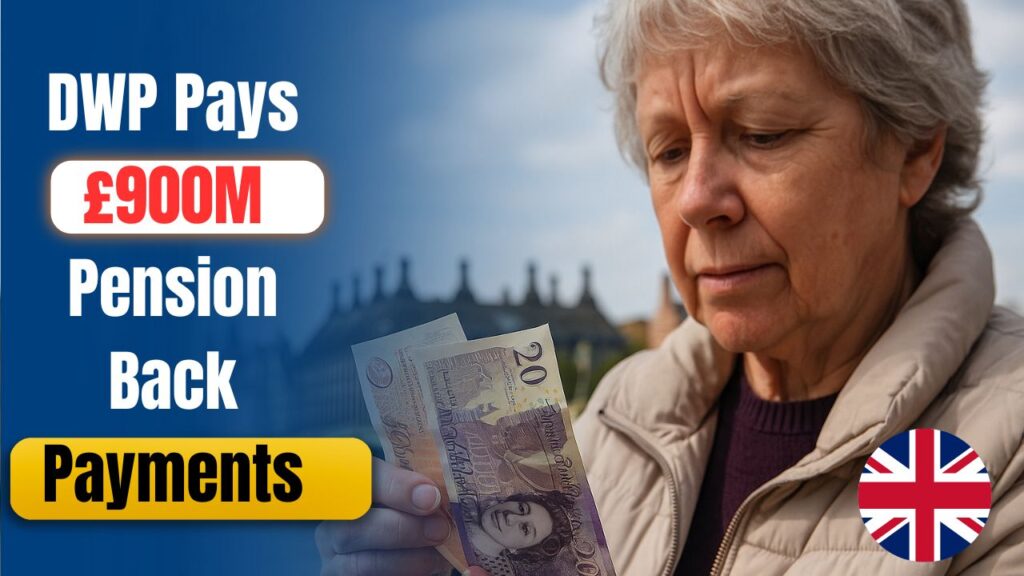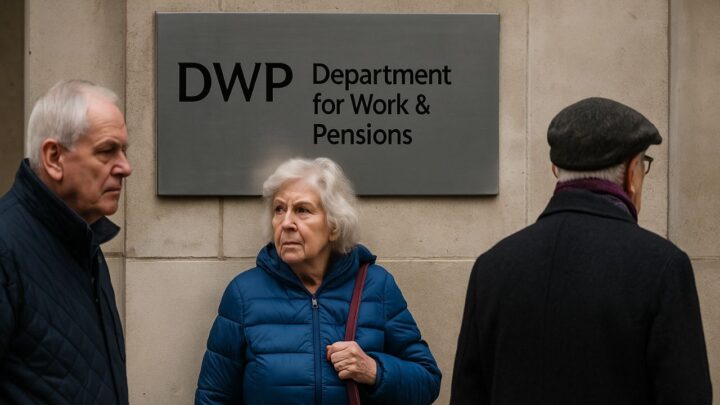The UK’s Department for Work and Pensions (DWP) has announced a major correction effort involving £900 million in back payments to retirees affected by past state pension errors. Thousands of pensioners, mostly women, were underpaid for years due to administrative miscalculations in the state pension system. This large-scale payout, part of a national rectification plan, aims to ensure that eligible pensioners receive the full amount they were originally entitled to. The DWP is continuing reviews into pension discrepancies to restore financial fairness and provide overdue compensation across the United Kingdom.

DWP £900 Million Back Payments Explained for UK Pensioners
The DWP’s £900 million back payment initiative targets pensioners who were underpaid between 1985 and 2021 due to outdated systems and manual processing errors. Most affected recipients are widows, over-80s, and married women whose pensions were not correctly updated after changes in their marital or financial status. These state pension underpayments have led to a large-scale recalculation by the DWP. Each eligible pensioner is being notified directly, with payments varying from £5,000 to over £40,000 depending on their case history. This move reinforces the UK government’s commitment to correcting pension inequities.
Eligibility Criteria for DWP State Pension Back Payments
Eligibility for these DWP back payments depends on several factors, including pension type, marital history, and age at the time of assessment. Individuals who received the old basic state pension before April 2016 and fall under categories such as “Category BL” or “Widowed Pensioners” are most likely to benefit. The DWP has identified three key groups: married women, widows, and those aged over 80 who did not get the full pension rate. Citizens are encouraged to check their pension statements or contact the Pension Service for a personalized eligibility review.
 DVLA Confirms Three Rule Hits for UK Drivers — Effective 6–12 October 2025 & New Fine Updated
DVLA Confirms Three Rule Hits for UK Drivers — Effective 6–12 October 2025 & New Fine Updated
How and When DWP Will Pay State Pension Arrears
According to the Department for Work and Pensions, back payments are being processed automatically, and eligible pensioners will receive letters detailing the corrected amount. Payments will be made directly into the same bank account used for regular pension deposits. The review process is ongoing throughout 2025, with most eligible recipients expected to receive their back payments before the end of October 2025. Pensioners who suspect they were underpaid but haven’t been contacted can reach out to the DWP helpline. This ensures every claimant receives rightful arrears with transparency and accuracy.

Impact of Pension Correction on UK Retirees
The £900 million in DWP back payments represents not just financial correction but also renewed trust in the pension system. Many retirees have reported relief after receiving overdue sums, which often total several years of underpayment. The correction initiative highlights the government’s effort to uphold pensioners’ rights and restore faith among those affected. In addition to these back payments, further system audits are planned to prevent future underpayments. The initiative also emphasizes the importance of reviewing pension records regularly to ensure accuracy in future entitlements.
| Category | Estimated Beneficiaries | Average Back Payment | Expected Payment Period |
|---|---|---|---|
| Married Women (Category BL) | 43,000+ | £12,000 | By October 2025 |
| Widowed Pensioners | 21,000+ | £17,000 | Ongoing 2025 |
| Over 80s Pensioners | 10,000+ | £9,000 | By Late 2025 |
| Total DWP Correction | ~74,000 People | Up to £900 Million | Throughout 2025 |
FAQs
Q1: Who is eligible for DWP back payments?
A1: Primarily widows, over-80s, and married women underpaid on their State Pension.
Q2: Do pensioners need to apply for these payments?
A2: No, the DWP identifies and contacts eligible recipients automatically.
Q3: When will all payments be completed?
A3: Most eligible pensioners will receive their money by October 2025.
Q4: How can I check if I was underpaid?
A4: You can contact the Pension Service or use the UK government pension checker online.




